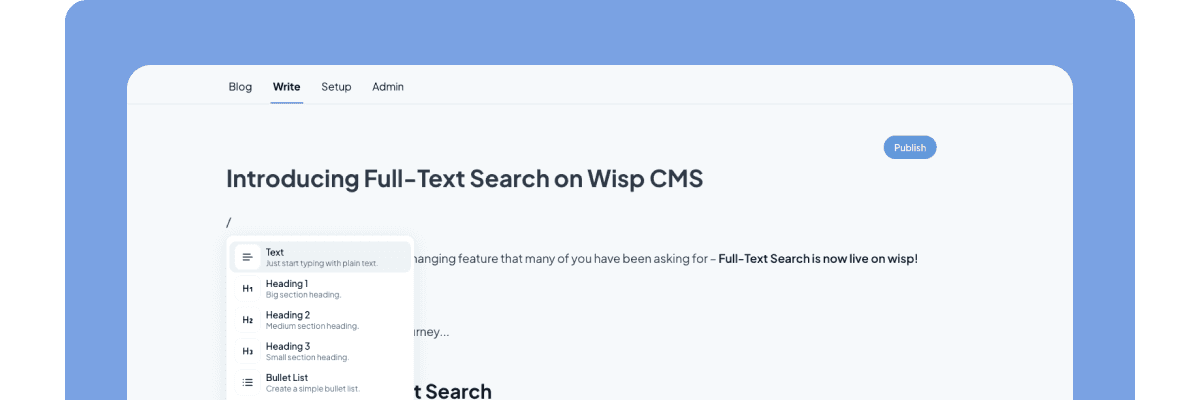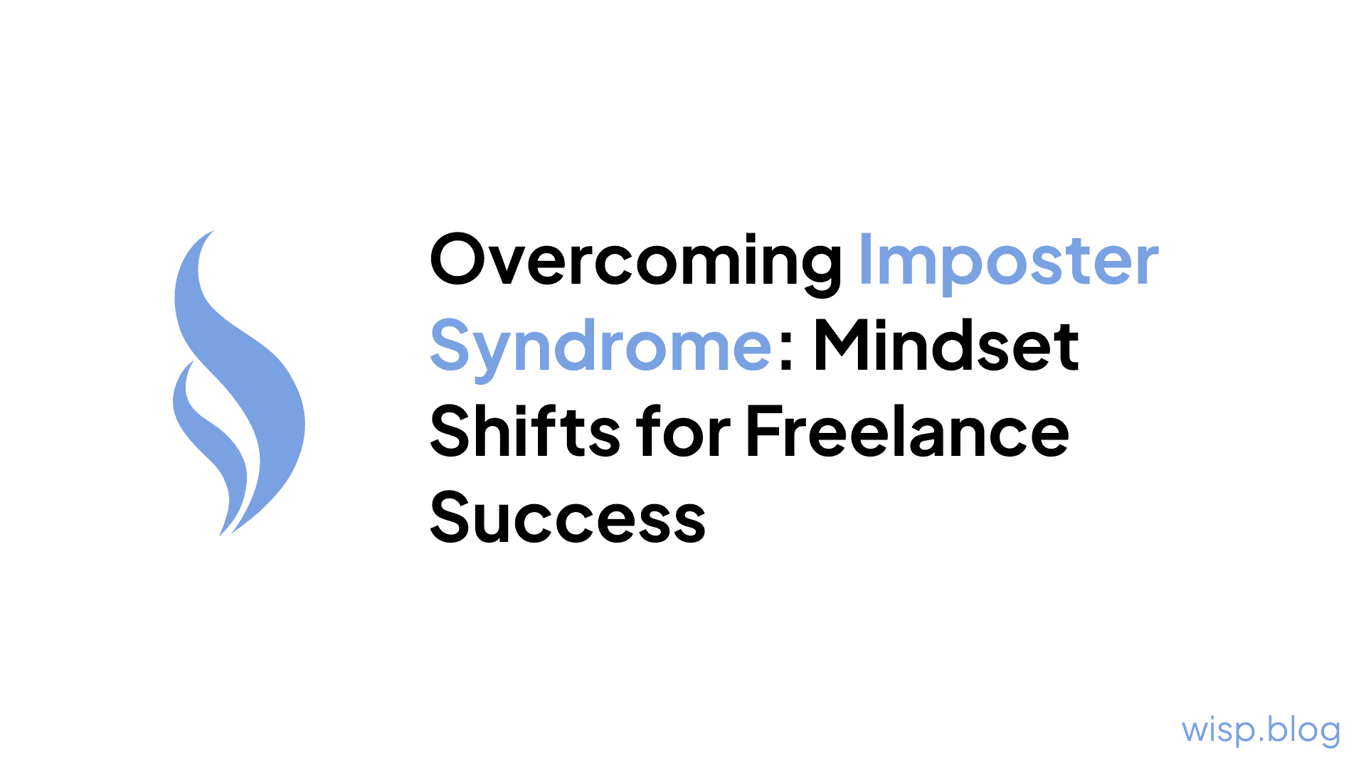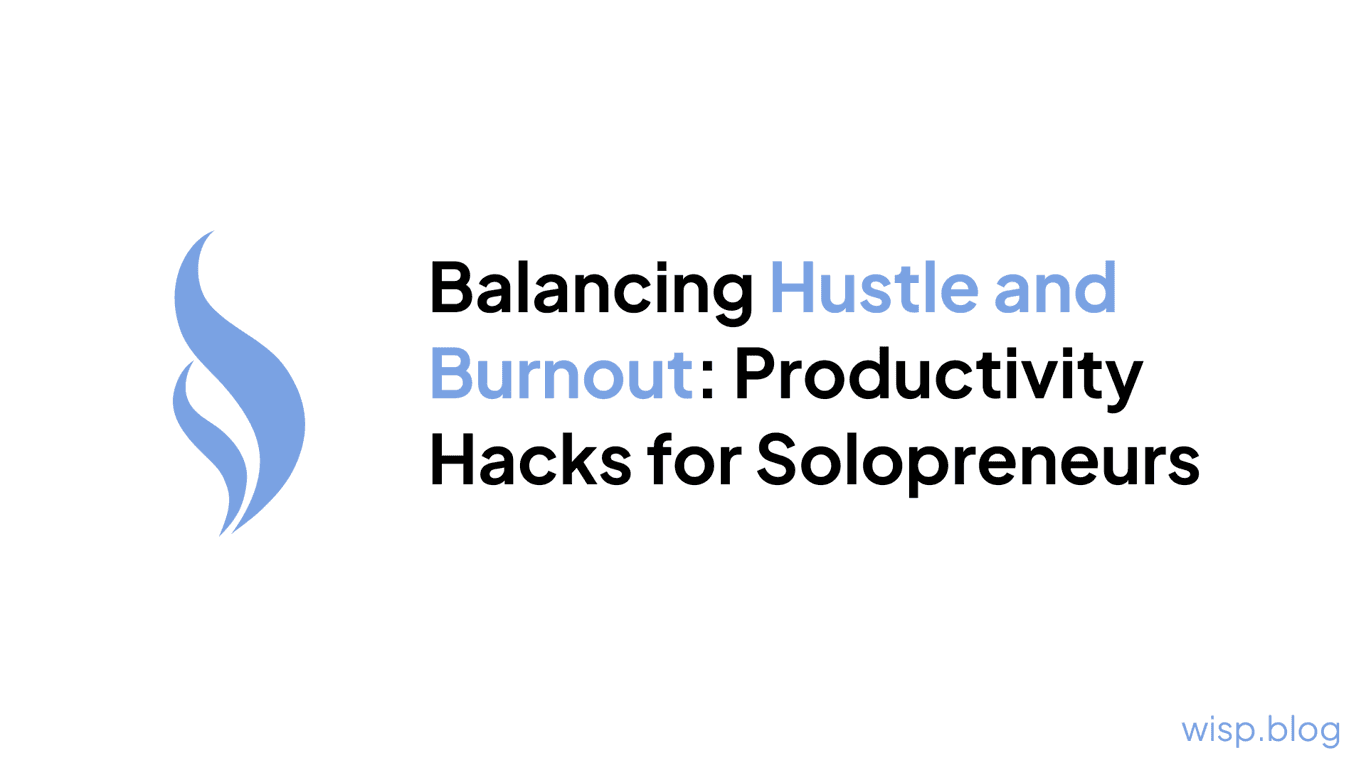
You're sick of the corporate grind - the endless meetings, the office politics, the lack of freedom and flexibility. You dream of being your own boss, setting your own schedule, and doing work that truly lights you up. But actually taking the leap to full-time freelancing feels terrifying. How will you find clients? What if the income isn't stable? Can you really handle all the hustle and uncertainty?
The thought of trading your steady paycheck for the freelance life fills you with a mix of excitement and dread. You crave the autonomy of entrepreneurship, but you've also gotten comfortable with the security of being an employee. Having a regular routine, benefits, and that automatic direct deposit twice a month is comforting, even if the work itself is unfulfilling.
You've dabbled in freelancing on the side, taking on some portfolio projects here and there. But trying to juggle client work on top of your 9-to-5 has been exhausting. You're constantly context switching between your day job and freelance hustle, with no true work-life balance. And the inconsistent income from sporadic freelance gigs doesn't feel sustainable.
Making the transition from full-time employee to full-time entrepreneur seems like an all-or-nothing gamble. You're worried about failing and having to slink back to a soul-sucking corporate job. But you're also haunted by the regret of not taking the risk to control your own destiny. Caught between these two fears, you find yourself stuck in limbo.
What if there's a way to systematically transition from employee to entrepreneur while keeping your day job? A proven path to turn freelancing into a sustainable business, with consistent income and clients - all without putting your financial security at risk. You don't have to make that terrifying leap into the void of full-time freelancing. Instead, you can build up your entrepreneurial runway while still employed, then make the transition gradually and safely.
Step 1: Validate Your Service Offering
Before quitting your job, it's crucial to validate that there's real demand for your freelance services. You don't want to make the leap only to find out there's no market for what you offer. Conduct thorough market research, get feedback on your portfolio, and start taking on paid client work in your spare time. This proves you can consistently find people willing to pay for your skills.
Research Competition and Pricing
Spend time analyzing your competition and their pricing models. Look at their websites, case studies, and marketing materials to understand how they position themselves. Check reviews and testimonials to gauge customer satisfaction levels.
Make note of their pricing packages, hourly rates, and any premium offerings. This gives you a baseline for what the market can bear based on the value promised. It also allows you to identify gaps and opportunities to differentiate your services.
Test Your Services on Freelancing Platforms
Create profiles on freelancing sites like Upwork, Fiverr, Toptal etc. and apply to smaller gigs within your niche. Treat these like paid test cases to validate interest in your offering. Deliver your best work and ask clients for honest feedback.
Pay close attention to any patterns in the feedback. If multiple clients suggest the same changes or additions, you'll know what to improve. Positive reviews can be used as testimonials when you launch more broadly.
Leverage Your Network
Reach out to your existing network of friends, family, and personal connections. Let them know about the freelance services you're looking to offer and ask if their companies need any related projects or support. Offer discounted rates in exchange for referrals and reviews you can leverage.
You'd be surprised how many people are willing to pay a friend or take a chance on you, especially if you offer a strong value proposition. Just be sure to overdeliver and treat them like real clients.
Attend Networking Events
Look for local meetups, conferences, or networking events related to your freelance niche. They're a great way to connect with prospective clients face-to-face. Come prepared with your elevator pitch, portfolio, and business cards.
But more importantly, be ready to ask questions and collect feedback. What are their biggest pain points and challenges related to your services? How have other freelancers impressed or disappointed them? This firsthand feedback is invaluable.
Run Paid Ads and Lead Magnets
Set up a simple, inexpensive paid ad campaign promoting a free deliverable like a guide, toolkit, or assessment related to your services. Run the ads to your target audience and use the leads you capture as a gauge for real interest levels.
For example, if you're a freelance web designer, promote a free "Website Grader" tool that provides a consultation. Or offer a guide on "10 Ways to Increase Conversions" for ecommerce businesses. The more people who opt-in, the better validation you have.
Common Pitfall: Only validating with other freelancers instead of real prospective clients. Their perspectives can be biased.
Pro Tip: Offer discounted "beta" services to get initial clients, then raise rates over time as you build social proof.
Step 2: Build Your Marketing Engine
Constantly marketing yourself as a freelancer is exhausting and unpredictable. Instead, build systems to consistently attract inbound leads. Optimize your online presence, create content that draws your ideal clients, and set up referral partnerships. This ensures a steady stream of clients without constant outbound hustling.
Optimize Your Online Presence
Having an optimized website and portfolio is table stakes for displaying your expertise. But don't stop there - create profiles on every relevant job board, freelancer directory, industry forum, and community platform where your prospects spend time online.
Invest in high-quality branding, professional headshots, and a cohesive design language across all your online properties. This builds credibility and trust from the start. Strategically sprinkle testimonials, case studies, and social proof throughout.
Make it easy for people to learn about you, see your best work, and contact you for opportunities. The more strategically you showcase your value, the more leads you'll attract.
Start a Blog/Vlog
With a platform like Wisp, you can quickly launch a professional blog and start publishing valuable content for your audience. Wisp makes it easy to add a blog directly to your existing website or online portfolio with just a few clicks.
Consistently blogging about your freelance niche helps establish you as a go-to expert. You can share insights, tips, tutorials, case studies, and behind-the-scenes looks at your work. This educates prospects and naturally attracts those who need your services.
Wisp's blogging features makes it simple to grow your audience and capture leads from your content.
Run Targeted Ads
While organic marketing should be your core focus, paid advertising allows you to get in front of your ideal clients quickly. Run targeted campaigns on platforms like Facebook, LinkedIn, Twitter etc. promoting lead magnets or driving traffic to your website and content.
Start small with just $5-10/day until you've nailed your messaging and audience targeting. Then scale up budgets once you've achieved a healthy return on ad spend. Retargeting website visitors is also a great way to nurture leads over time.
Network Face-to-Face
Don't underestimate the power of in-person connections. Attend local meetups, conferences, and networking events related to your niche. Come prepared with business cards, your elevator pitch, and a friendly demeanor.
Make it a goal to have real conversations, not just to collect contacts. Ask people about their challenges and how you may be able to help. You'll often find warm leads just by listening and providing value first.
Leverage Referral Partnerships
Identify other service providers who offer complementary services to your own. For example, if you're a freelance copywriter, potentially partner with web designers, SEO consultants, social media marketers, and so on.
Agree to cross-promote each other's services and share referral fees when you send business back and forth. You can quickly multiply your lead sources through strategic partnerships like these.
Common Pitfall: Spreading yourself too thin across too many marketing channels initially. Focus on 1-2 key channels first.
Pro Tip: Create premium lead magnets like guides, tools or templates to capture emails and nurture leads through email marketing sequences.
Step 3: Create Productized Services
Shift away from trading dollars for hours. Package your services into standardized offerings with set scopes and prices. This makes your business more scalable, allows you to raise rates more easily, and filters for better clients. It also lets you eventually hand off fulfilment to subcontractors as you grow.
Define Service Packages
Rather than offering unbounded hourly services, package your expertise into set offerings at multiple pricing tiers. Clearly define what's included in each package - the deliverables, turnaround times, rounds of revisions, etc.
For example, as a freelance web designer you could have packages like:
Basic Website (5 pages, 3 revisions, 2 week timeline) - $2,500
E-Commerce Website (10 pages, 5 revisions, 1 month timeline) - $5,000
Premium Website (Unlimited pages, unlimited revisions, 2 month timeline) - $10,000
Create Persuasive Sales Pages
You'll need compelling sales pages that sell the value of each package. Don't just list out features - speak directly to your audience's biggest pain points and how your package resolves them. Use persuasive copy, multimedia, testimonials and more to overcome objections.
Highlight the specific outcomes and results they can expect from each tier of service. The more you can tangibly prove your packages deliver what they need, the easier the sale becomes.
Develop Sales Scripts
While your sales pages will close many buyers, you'll also need effective sales scripts and proposal templates. Prepare responses to common questions and objections. Role play negotiations around pricing, scope, timelines and more.
The smoother and more confident you can be in these sales conversations, the more you'll be able to command higher fees from quality clients. Constantly improve your scripts based on real buyer conversations.
Set Boundaries and Policies
To avoid nightmare scope creep scenarios, you need strict boundaries and change order policies. Clearly define what is and isn't included in each package. Specify how requests outside the scope will be handled and paid for separately.
For example, you could include 2 rounds of revisions in your website package. Anything beyond that initiates a change order at your hourly rate. Be firm in enforcing these boundaries and clients will respect you more.
Create Fulfillment Templates
For each service package, create templates and process documentation to streamline fulfillment. Have a master checklist of all deliverables, a project plan, client questionnaires, and any other assets needed.
The more systematic you can make your service delivery, the easier it becomes to hand off components to subcontractors. You'll spend less time reinventing the wheel and more time on high-value activities.
Develop Knowledge Products
In addition to done-for-you services, consider developing educational knowledge products like courses, workshops, tools and templates. These make great upsells and cross-sells for your services.
They also allow you to scale your revenue beyond just trading time for money. You can sell these products repeatedly without additional work. Or bundle them into higher-tier packages for more perceived value.
Common Pitfall: Still doing custom, hourly-rated work because it feels safer. Commit to packages fully.
Pro Tip: Raise rates annually and grandfather existing clients at old rates to avoid pushback.
Step 4: Develop Passive Income Streams
Don't just trade time for money - build income streams that compound while you sleep. Create digital products, educational courses, affiliate marketing, or other passive revenue sources. This diversifies your income beyond client services and creates entrepreneurial wealth over time.
Create Online Courses
Leverage your expertise by creating video courses, tutorials, and educational training programs to sell online. Use a platform like Udemy, Skillshare or Teachable to host and market your courses to a global audience.
You can film professional video lessons, include downloadable resources like worksheets and templates, and even host live Q&A sessions. This allows you to generate revenue passively from each course sale.
Consistently update your courses over time by recording new lessons and adding supplemental content. You can charge a single fee or offer subscription pricing for ongoing access.
Publish Digital Books and Guides
Self-publish ebooks, downloadable PDF guides, checklists, cheatsheets and other digital written content to sell online. You can sell these through your own website, on marketplaces like Amazon Kindle, or on gig platforms like Gumroad.
Repurpose successful blog posts, client projects, and processes you've already created into more comprehensive premium content. Add in multimedia, bonuses, and make it a professional high-value package.
The more niche and targeted these digital products are, the more you can charge premium prices. And they'll continue generating revenue for years after the initial creation effort.
Earn Affiliate Income
Leverage affiliate marketing by earning commissions promoting other companies' products or services. Only promote tools, resources, and offers that are highly relevant and valuable to your audience.
Share honest reviews, case studies, and endorsements for the affiliate products on your blog and social media. Include tracking links so you earn a cut of any sales you generate.
You can also bundle affiliate offers as bonuses when selling your own products and services. This allows you to create more value and increase conversion rates.
Sell Templates and Tools
If you create templates, tools, code snippets, or other digital assets as part of client work, you can repurpose those into products to sell on marketplaces like Creative Market, CodeCanyon, Gumroad and more.
For example, if you're a freelance web designer, you could sell website templates, UI kits, graphics packs, Figma files, etc. If you're a freelance writer, sell copywriting templates for different industries.
Even selling these items for $5-20 each can generate healthy passive income over time as volumes add up. Plus you've already done most of the work!
Host Webinars and Workshops
Hosting live webinars, masterclasses, and workshops is a great way to generate income beyond 1-on-1 client work. You can charge premium prices for a limited number of virtual attendees.
Record these live sessions and edit them into professional video products to sell over and over again as a passive income stream. Or offer the recordings as bonuses when selling other products and services.
You're getting paid to create valuable content that continues generating revenue for you indefinitely after the live event is over.
Common Pitfall: Spending too much time creating before validating audience demand.
Pro Tip: Start by repackaging successful client work or processes you've already created.
Step 5: Systematize Client Fulfillment
Document processes, create templates and checklists, and use productivity tools to streamline your service delivery. This allows you to take on more clients without proportionally more work. It also prepares you to eventually hire team members and contractors.
Use Project Management Tools
Implement a dedicated project management tool like Trello, Asana, ClickUp or others to plan and track every client engagement. Create reusable templates for your typical project workflows and processes.
Having a centralized place to manage all client communication, file sharing, tasks, and progress makes your operation more efficient. It also allows you to easily pass projects off to contractors or team members as you scale.
Create Template Client Documents
Draft up template versions of all the standard documents you send to clients - contracts, proposals, creative briefs, questionnaires, and more. Use a tool like Better Proposals or Quoters to streamline this process.
Having these templates ready to go saves you from recreating the wheel each time. You can simply fill in the particulars for each new client, while maintaining consistent professional branding and legalese.
Document Processes and Procedures
As you complete projects, take meticulous notes on your step-by-step processes, including any tools, resources, or best practices you use. Gradually build out a comprehensive operations manual for your business.
This serves as a knowledge base to train future team members and contractors. It ensures your quality standards can be maintained even when you're not directly fulfilling the work yourself.
Schedule Marketing Content
Implement an editorial calendar and use content scheduling tools to plan out your blogging, email newsletters, social media, and other marketing well in advance. Use tools like Buffer, Hootsuite, or CoSchedule to queue up content for automatic publishing.
This frees you from having to constantly work on creating and publishing new content in the moment. You can batch larger quantities of content during dedicated work blocks, then put it on autopilot.
If you run into writers' block and need some content ideas, consider using Wisp's Blog Post Ideas Generator to brainstorm for content ideas that will resonate with your audience.
Automate Administrative Tasks
Find ways to automate repetitive administrative tasks like invoicing, bookkeeping, contract signatures, and more. Use tools like FreshBooks, QuickBooks, HelloSign, and zapier workflows to handle these tasks programmatically.
The less time you spend on paperwork and administrative overhead, the more time you can dedicate to high-value client work and other revenue-generating activities for your business.
Outsource Service Components
As you productize your service packages, identify components that can be outsourced to freelance contractors or agencies to handle. This could include things like:
Graphic design, illustration, or animation
Copywriting, content creation
Video editing and production
Code development or website implementation
Customer support, scheduling, and other admin tasks
Maintain quality control by providing detailed briefs and process documentation to contractors. But otherwise, let them own their piece of the overall client delivery.
Common Pitfall: Not documenting as you go, then having to recreate the wheel each time.
Pro Tip: Conduct retrospectives after each project to find optimization opportunities.
Step 6: Transition Gradually
Once your freelance business is generating consistent revenue that replaces or exceeds your employment income, you can begin transitioning out of your job. Go part-time, take a sabbatical, or give notice - but do it on your terms when you're truly ready.
Calculate Your "Quit Number"
Determine the minimum monthly revenue you need from your freelance business to cover your living expenses, financial obligations, and maintain your desired lifestyle. This is your "quit number" for when to seriously consider leaving your job.
Factor in all your recurring costs like mortgage/rent, utilities, insurance, food, entertainment, etc. But also budget for previously covered benefits like health insurance that you'll now be paying out of pocket.
Once your freelance income is consistently exceeding this number with a comfortable buffer, you've achieved financial runway to make the transition.
Request Part-Time or Remote Work
Before quitting entirely, see if your employer will allow you to go part-time or switch to a remote working arrangement. This lets you ease into your freelance business with a still-stable income source.
Pitch it as a trial period where you can prove you'll remain productive and committed. Or position it as a retention play since you're looking for more lifestyle flexibility. If they value you as an employee, they'll likely oblige.
Negotiate a Sabbatical or Leave
If going part-time isn't an option, negotiate an extended sabbatical or leave of absence from your employer. This gives you a runway of 3-6+ months to focus solely on your freelance business before deciding on a permanent departure.
Agree to come back for a period once the sabbatical ends, or give them the option to pay you a portion of your salary to extend the leave indefinitely. Either way, you buy yourself more transition time.
Give Proper Notice
Once you're financially and mentally ready to move on, give proper notice to your employer per your contract terms - typically 2-4 weeks. Offer to document and transition your responsibilities to prevent burning bridges.
Leaving on respectful terms preserves the relationship and opportunity to return if your business hits a rough patch. It also keeps you in good standing for references, which can be valuable when landing new clients.
Explore Healthcare Options
With no employer covering your health insurance, you'll need an alternative healthcare solution. Explore options like:
Spouse/partner's insurance plan
Private marketplace plans (potentially with subsidies)
Health sharing ministries or fixed payment plans
Remaining on your employer's plan through COBRA for a period
Finding an affordable healthcare option that provides sufficient coverage is critical when going full-time freelance. Don't let this piece get overlooked in your planning.
Common Pitfall: Burning bridges by quitting abruptly or on bad terms.
Pro Tip: Discuss the possibility of staying on as a contractor or consultant to your employer.
Conclusion: Making a Secure Leap into Freelancing
The transition from employee to full-time entrepreneur doesn't have to be a blind leap into the abyss. By following this step-by-step plan, you'll systematically build up your freelance business runway while still employed. You'll validate your services, create marketing systems for consistent leads, productize your offerings, develop passive income streams, and streamline operations.
This allows you to gradually transition when you're truly ready - not out of desperation from quitting your job first. You'll finally be able to escape the corporate grind and experience the freedom, autonomy, and fulfillment of entrepreneurship. But you'll do it on your own terms, without risking your financial security in the process.



